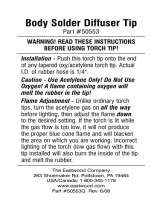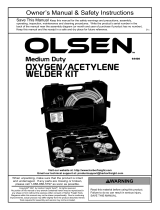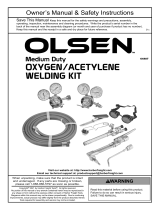�
4. WARNING: This product, when used for welding or
cutting, produces fumes or gases which
contain chemicals known to the State of
California to cause birth defects and, in
some cases, cancer. (California Health &
Safety Code �25249.5 et seq.)
Means immediate hazards which, if not avoided,
will result in immediate, serious personal in-
jury or loss of life.
Means potential hazards which could result in
personal injury or loss of life.
Means hazards which could result in minor
personal injury.
MEANING OF SYMBOLS - As used throughout
this manual: Means Attention! Be Alert! Your
safety is involved.
SAFETY PRECAUTIONS











